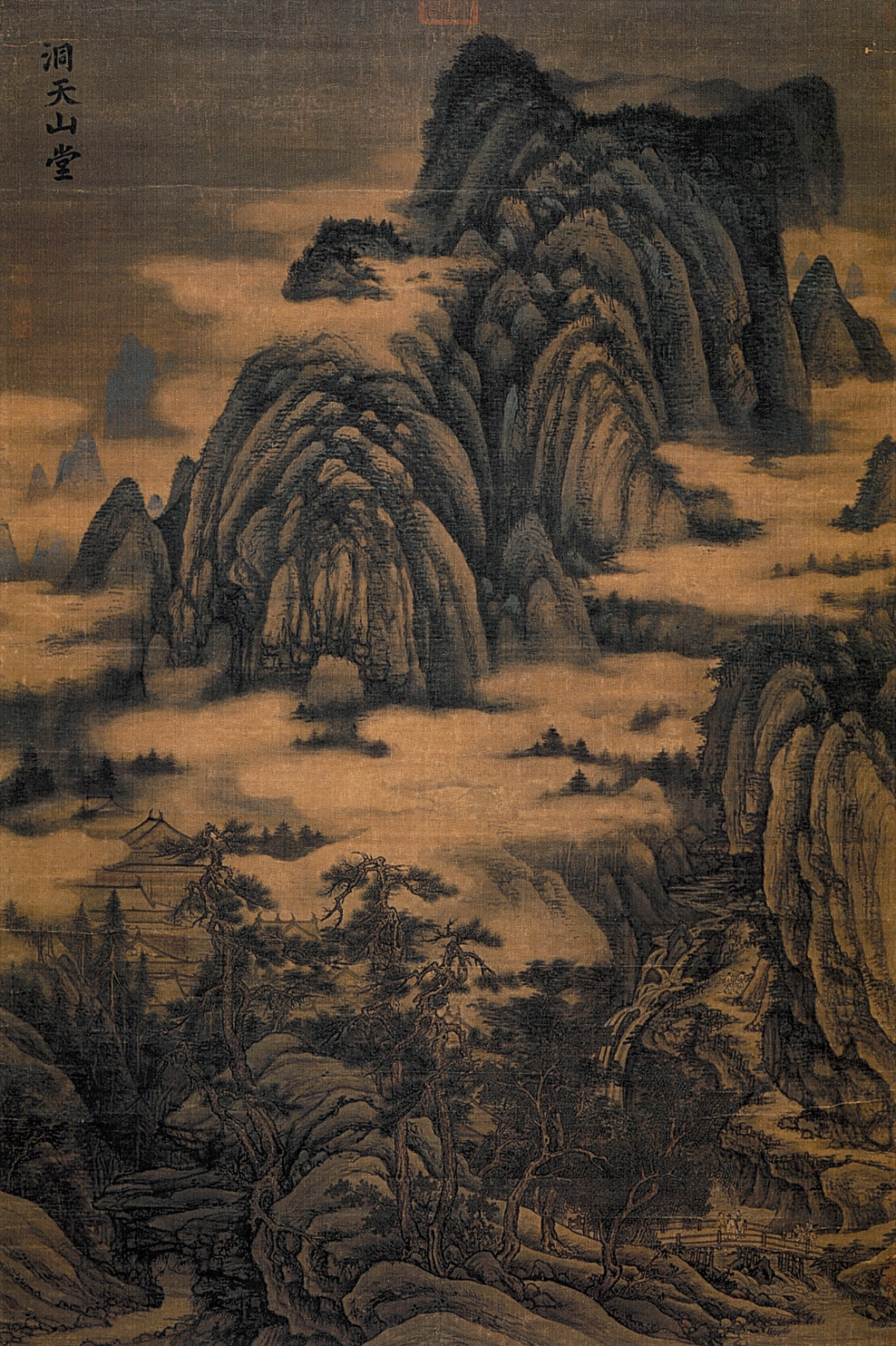|
Strolling About in Spring, by Zhan Ziqian, artist of the Sui Dynasty (581–618). 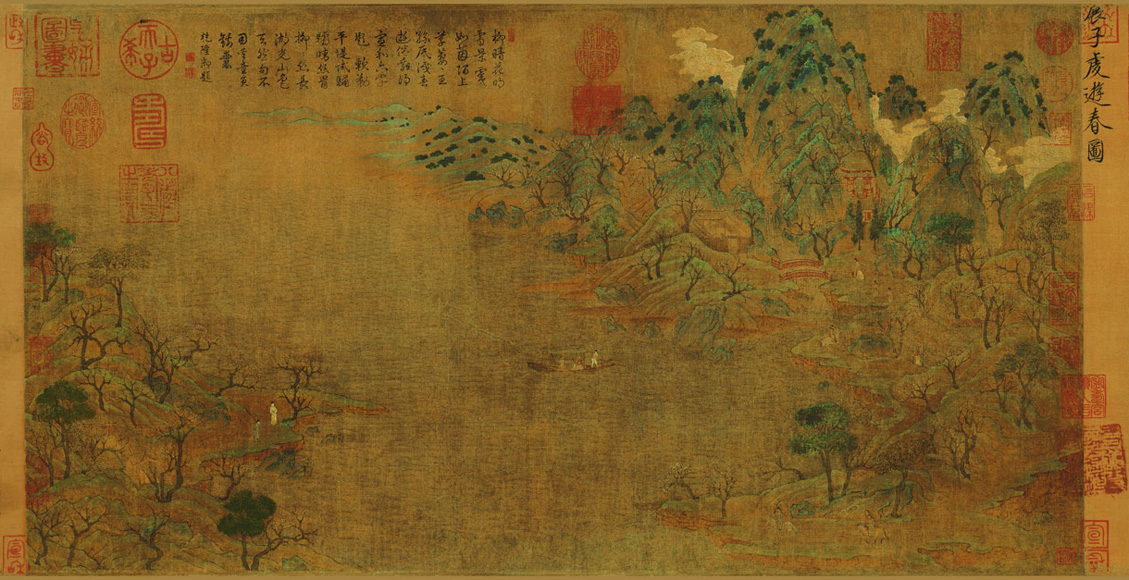
Strolling About in Spring, by Zhan Ziqian, artist of the Sui Dynasty (581–618). A Chinese Tang Dynasty tri-color glazed porcelain horse (ca. 700 CE), using yellow, green and white ... 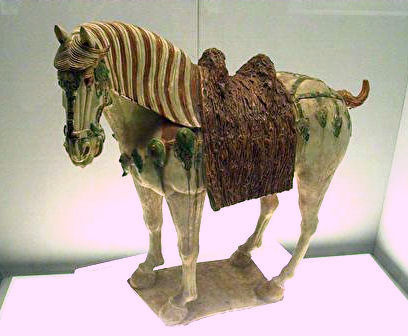
A Chinese Tang Dynasty tri-color glazed porcelain horse (ca. 700 CE), using yellow, green and white colors. Buddhist architecture and sculpture Following a transition under the Sui Dynasty, Buddhist sculpture of the Tang evolved towards a markedly lifelike expression. As a consequence of the Dynasty's openness to foreign trade and influences through the Silk Road, Tang dynasty Buddhist sculpture assumed a rather classical form, inspired by the Greco-Buddhist art of Central Asia. However, foreign influences came to be negatively perceived towards the end of the Tang dynasty. In the year 845, the Tang emperor Wu-Tsung outlawed all "foreign" religions (including Christian Nestorianism, Zoroastrianism and Buddhism) in order to support the indigenous Taoism. He confiscated Buddhist possessions and forced the faith to go underground, therefore affecting the ulterior development of the religion and its arts in China. Most wooden Tang sculptures have not survived, though representations of the Tang international style can still be seen in Nara, Japan. The longevity of stone sculpture has proved much greater. Some of the finest examples can be seen at Longmen, near Luoyang, Yungang near Datong, and Bingling Temple, in Gansu. One of the most famous Buddhist Chinese pagodas is the Giant Wild Goose Pagoda, built in 652 AD. A Man Herding Horses, by Han Gan (706–783 AD), Tang Dynasty original 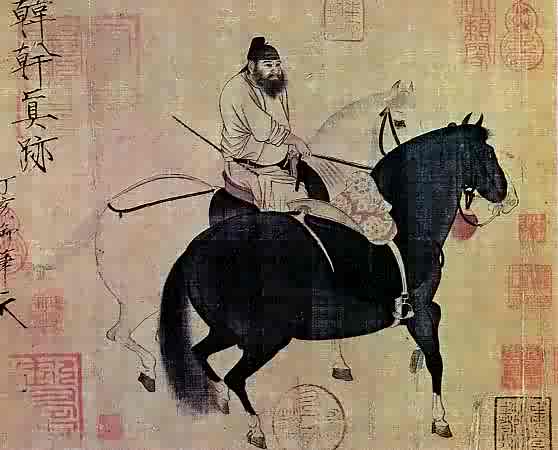
A Man Herding Horses, by Han Gan (706–783 AD), Tang Dynasty original Tang Dynasty painting from Dunhuang. 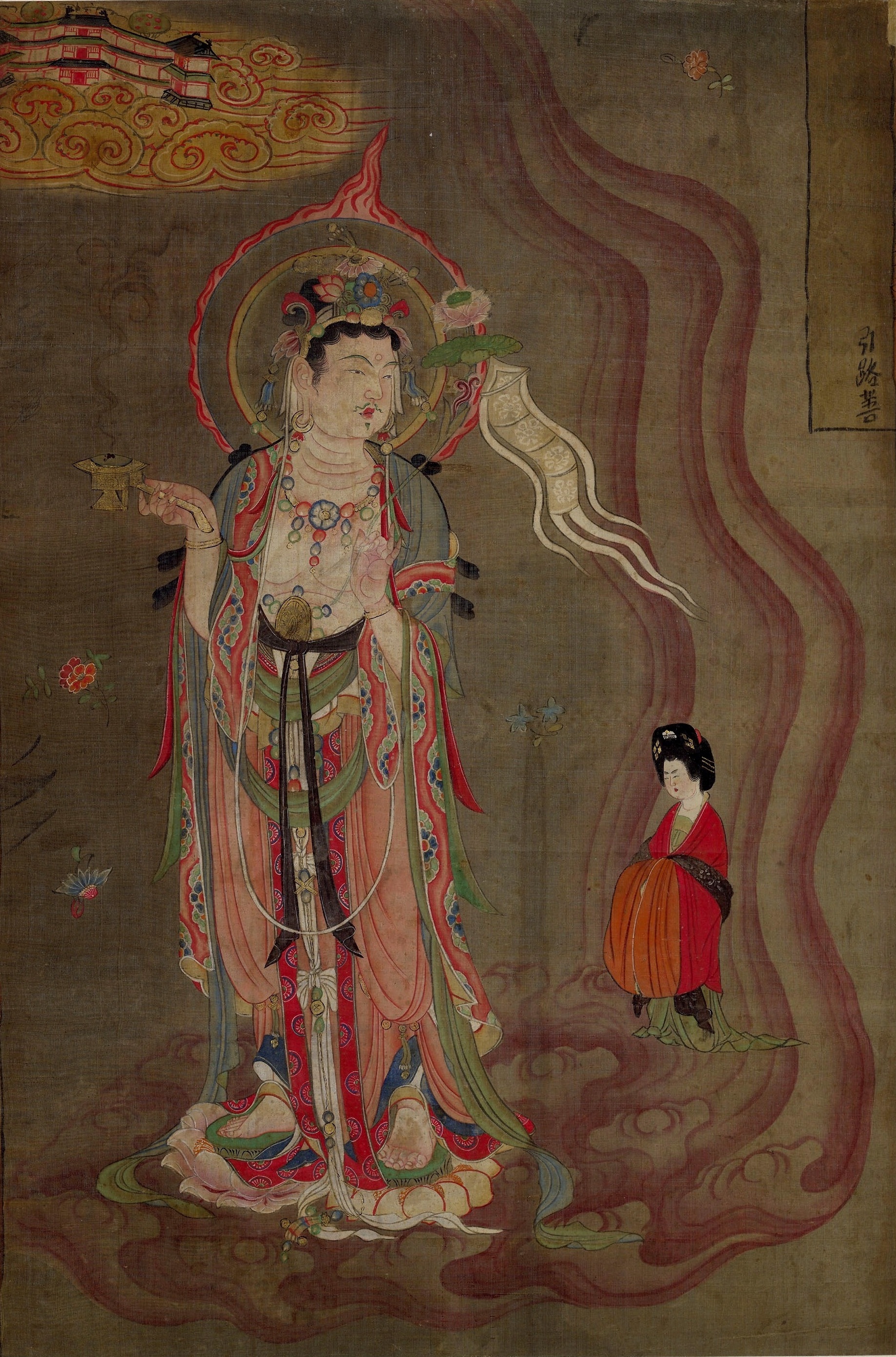
Tang Dynasty painting from Dunhuang. Painting Beginning in the Tang dynasty (618–907), the primary subject matter of painting was the landscape, known as shanshui (mountain water) painting. In these landscapes, usually monochromatic and sparse, the purpose was not to reproduce exactly the appearance of nature but rather to grasp an emotion or atmosphere so as to catch the "rhythm" of nature. Painting in the traditional style involved essentially the same techniques as calligraphy and was done with a brush dipped in black or colored ink; oils were not used. As with calligraphy, the most popular materials on which paintings were made were paper and silk. The finished works were then mounted on scrolls, which could be hung or rolled up. Traditional painting was also done in albums, on walls, lacquer work, and in other media. Dong Yuan was an active painter in the Southern Tang Kingdom. He was known for both figure and landscape paintings, and exemplified the elegant style which would become the standard for brush painting in China over the next 900 years. As with many artists in China, his profession was as an official where he studied the existing styles of Li Sixun and Wang Wei. However, he added to the number of techniques, including more sophisticated perspective, use of pointillism and crosshatching to build up vivid effect. Zhan Ziqian was a painter during the Sui Dynasty. His only painting in existence is Strolling About In Spring arranged mountains perspectively. Because the first pure scenery paintings of Europe emerged after the 17th century, Strolling About In Spring may well be the first scenery painting of the world. |
